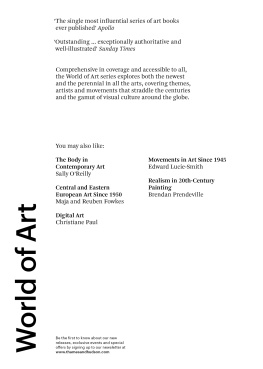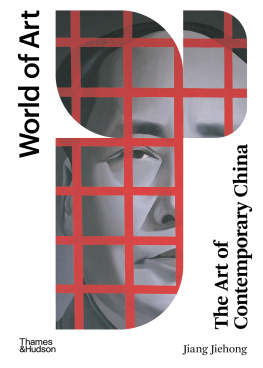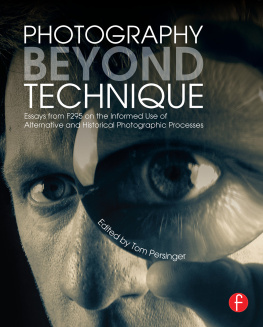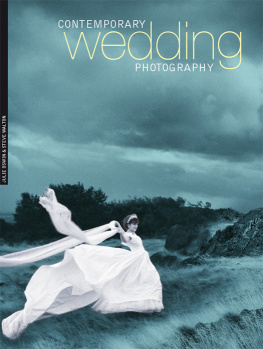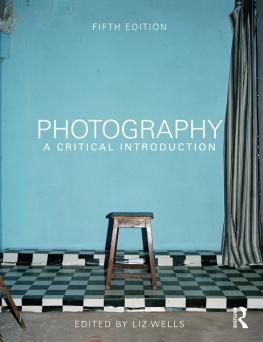


Philip-Lorca diCorcia, Head #7, 2000. DiCorcias Head series was made by placing flash lighting on construction scaffolding above a busy New York street, out of sight of the passers-by below. The movements of the pedestrians prompted diCorcia to activate the flash, at which moment he photographed the illuminated stranger with a long-lens camera. The resulting images show people who do not know that they are being photographed and so do not compose themselves for their portraits.

About the author
Charlotte Cotton is a curator and writer. She has held positions including Head of the Wallis Annenberg Photography Department at Los Angeles County Museum of Art and Curator of Photography at the Victoria and Albert Museum, and has curated exhibitions on contemporary photography worldwide. Her publications include Photography is Magic (2015), Public, Private, Secret: On Photography & the Configuration of Self (2018) and Fashion Image Revolution (2018).
Contents
If there is a single, overarching idea of contemporary photography in The Photograph as Contemporary Art, it is the wonderful pluralism of this creative field. The selection of over 350 photographers whose work is illustrated and cited in these pages aims to convey a sense of the broad and intelligent scope of contemporary photography. While it includes some well-known photographers who hold established residence in the pantheon of contemporary art, it treats contemporary art photography as fundamentally diverse in both form and intent, involving the cumulative efforts of many independent practitioners. Every photographer whose work is summoned here shares a commitment to making their own contribution to the physical and intellectual space of culture. In its most literal interpretation, this means that all of the photographers in this book create work for viewership, predominantly through display on gallery walls and in the pages of art books, with the intention of elaborating, pinpointing and making departures from resonant cultural ideas. It is important to bear in mind that most of the photographers are represented here by a single image, invariably selected to stand for their entire body of work. The selection of one project from a photographers oeuvre belies the full range of their expressions and underplays the plural possibilities that photography offers its makers, but it is a necessary simplification in the context of this book.

Zoe Leonard, TV Wheelbarrow, from the series Analogue, 2001/2016 Leonards pointedly titled series Analogue consists of street photographs made in various cities around the world which she has either lived in or visited. The series captures the enduring possibilities of the camera to reflect and document what surrounds us and the still-relevant language of pre-digital photography.
The majority of contemporary art photographers working today have undertaken some form of undergraduate and graduate art-school education and, like other fine artists, are crafting work primarily for an audience of art viewers, structured into an international web of commercial and non-profit galleries, museums, publishing houses and imprints, festivals, fairs and biennials. In the wake of this increase in professional infrastructure that champions and commodifies photography as contemporary art in the twenty-first century, there is perhaps a tendency to position photographic practices as the consolidation and qualification of the field, rather than as its conceptual rethinking. Photographys place as a necessary and expected aspect of contemporary art practice has strengthened significantly in the new millennium, underpinned by the homage that continues to be paid to the mediums groundbreaking photographers and the ongoing appraisal of the roles that photography has played in our cultural and social histories since the early nineteenth century. While the re-animation of photographys own histories is a substantive part of the story of art photography in the twenty-first century, it is done with artists full cognizance of the climate within which photographys meaning is constructed. Even when we see historic photographic techniques and practices at play, they are being activated within the climate of our contemporary image-making environment. The militating factors that shape our image world of which photography as contemporary art is a component include the ways in which we use purely image-based communication in our daily interactions, on social media and image-sharing platforms, for instance; the opportunities for self-publishing photobooks following the revolution in digital printing in the early twenty-first century and the concurrent growth of small-press independent artist book publishing; new camera technologies such as the ability to fuse still- and moving-image capture; the evolution and application of imaging and 3D printing software; and the spectres of state surveillance and corporate data-mining that now constitute the motherlode of unauthored machine-made (and read) images. These new facets of image-making impact not only on the visual languages and modes of dissemination for photography as contemporary art, but also push us to become more specific about what qualifies as artistic photographic practice in light of the ubiquity of photography in everyday life. In this context, it becomes increasingly evident that contemporary art photography is driven by the astute and active choices of its makers, whose works maintain the brilliantly dialogical nature of an art form within the ever-shifting wider photographic landscape. More than this, we perhaps see more clearly the extent to which artistphotographers make their work in conscious resistance to and questioning of the mainstream ideas and uses of photography, and collectively protect at least one arena where the basic democracy of photography preserves the right to observe and to be seen, and to articulate personal narratives and human stories.

Sophie Calle, The Chromatic Diet, 1998. For six days, the French artist Sophie Calle ate a diet of food of a single colour, invented for her by the novelist Paul Auster. This combination of artistic strategy and daily life is the hallmark of Calles imaginative work.

Yinka Shonibare, Diary of a Victorian Dandy 19:00 hours, 1998. Nigerian-born British artist Yinka Shonibares Diary of a Victorian Dandy features five moments in the day in the life of a dandy, performed by the artist. One of the obvious references is to The Rakes Progress, William Hogarths (16971764) painted morality tale of the young cad Tom Rockwell.
Next page
